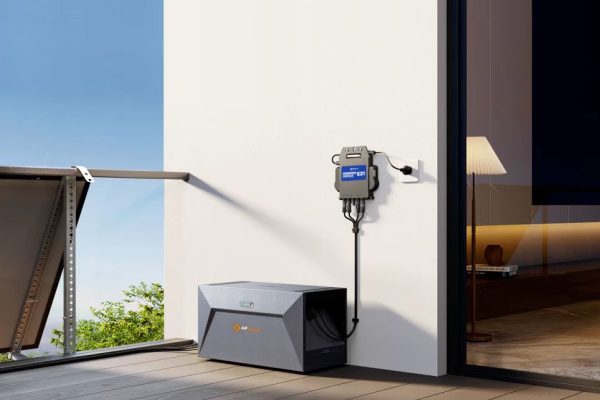Providing Flexible Energy Solutions Where It’s Needed Most
1. Why Low-Cost Kits Matter
Access to reliable electricity remains a challenge in humanitarian operations, disaster relief efforts, and remote communities. Traditional energy solutions often require complex installation, specialized maintenance, or high upfront investment.
Low-cost integrated PV + ESS kits provide a plug-and-play, flexible, and affordable option for these contexts. They combine solar panels, battery storage, and sometimes an inverter in a single solution, allowing quick deployment and simplified operation.
These kits are particularly valuable for field hospitals, emergency shelters, remote schools, and rural households.
2. What Are Integrated Kits?
An integrated kit typically includes:
- Solar PV Panels – sized according to expected load.
- Battery Storage – lithium-ion or lead-acid, depending on cost and lifecycle needs.
- Inverter / Charge Controller – converts DC to AC and manages battery charging.
- Cabling & Mounting Hardware – pre-packaged for easy setup.
- Optional Accessories – lights, small appliances, or USB ports for mobile charging.
Key Features:
- Pre-configured for quick installation.
- Designed for low-maintenance operation.
- Can scale modularly by adding extra batteries or panels.
3. Advantages of Low-Cost Integrated Kits
A. Rapid Deployment
- Kits arrive ready to install, often with minimal technical skills required.
- Ideal for disaster relief, refugee camps, or emergency clinics.
B. Cost-Effectiveness
- Integrated design reduces component sourcing and shipping complexity.
- Less labor-intensive installation lowers overall project cost.
C. Reliability and Safety
- Pre-tested systems reduce the risk of wiring errors or inverter-battery mismatches.
- Some kits include overload, short-circuit, and thermal protections.
D. Scalability
- Modular design allows users to expand capacity as needs grow.
- Suitable for evolving applications in humanitarian operations.
E. Ease of Training and Support
- Field staff require minimal training to operate integrated kits.
- Simplifies remote troubleshooting and maintenance.
4. Typical Applications
1. Humanitarian Operations
- Emergency shelters powered for lighting, refrigeration, and communication devices.
- Field clinics with reliable power for medical equipment.
- Mobile kitchens or water purification systems.
2. Remote Communities
- Rural schools powered for lighting, computers, and small lab equipment.
- Village health posts or community centers.
- Agricultural applications such as water pumping or cold storage.
3. Disaster Relief and Rapid Response
- Post-hurricane or earthquake deployment.
- Refugee camps needing temporary but reliable energy solutions.
- Temporary administrative offices and communications hubs.
5. Designing Low-Cost Integrated Kits
When designing kits for humanitarian or remote applications, consider:
A. Energy Needs Assessment
- Estimate critical loads: lighting, communication, medical devices.
- Identify optional loads: small appliances or cooling systems.
B. Battery Sizing
- Balance cost with autonomy: larger batteries last longer but increase upfront cost.
- Lithium-ion preferred for higher efficiency and longer cycle life, though lead-acid may be chosen for ultra-low budgets.
C. Inverter and Controller Selection
- Match inverter capacity to peak load.
- Include a charge controller that supports solar input and prevents overcharging.
D. Portability and Modularity
- Design for transport via standard vehicles or even air transport.
- Modular panels and battery packs simplify on-site assembly.
E. Safety and Protection
- Include fuses, circuit breakers, and arc protection.
- Ensure temperature and overload protections for reliability in harsh environments.
6. Implementation Tips
- Pre-assemble modules where possible to reduce on-site work.
- Provide clear, illustrated manuals suitable for non-technical users.
- Train local partners or community members to perform basic maintenance.
- Use monitoring tools if feasible, even via mobile apps, to track system health.
Example:
A 1 kW solar + 2 kWh battery kit powers lighting, phones, and a small refrigerator for 5–10 people in a temporary shelter. The system can be deployed in less than a day with minimal tools.
7. Challenges and Considerations
- Limited Customization: Kits may not fit unusual energy needs without adding extra components.
- Battery Degradation: In remote areas, replacement may be slow. Proper sizing and quality batteries mitigate this.
- Transport and Logistics: Even “low-cost” kits require planning for delivery in rugged or disaster-affected areas.
- End-of-Life Management: Safe disposal or recycling of batteries is critical.
Mitigation:
- Design modular, expandable systems.
- Use quality components with clear maintenance schedules.
- Partner with NGOs or local distributors for logistical support.
8. Positioning for Humanitarian and Remote Markets
For distributors and integrators targeting these markets:
- Highlight Affordability – emphasize total cost savings versus diesel generators or ad-hoc PV setups.
- Emphasize Quick Deployment – demonstrate installation in hours, not days.
- Focus on Reliability – show pre-tested, safe, and low-maintenance operation.
- Use Testimonials and Case Studies – real-world examples build trust with NGOs and local governments.
Tip: Offer modular upgrades to scale with community growth or temporary emergency expansions.
Low-cost integrated PV + ESS kits are game-changers for humanitarian, disaster relief, and remote applications. They combine affordability, reliability, and ease-of-use to deliver essential energy quickly and safely.
For integrators, distributors, and NGOs, these kits provide a practical, scalable solution for providing electricity where it’s needed most, helping communities and relief efforts stay powered, safe, and resilient.









